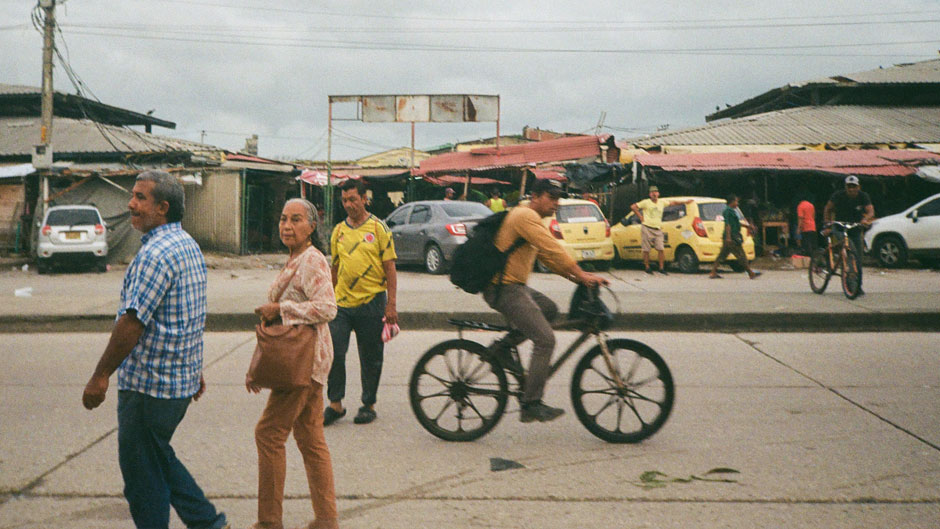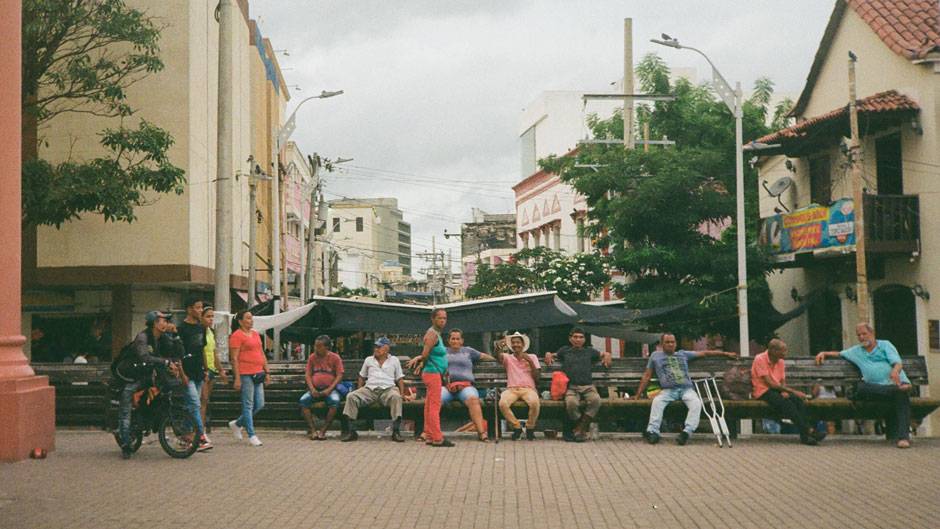The fishermen who live in Barranquilla, Colombia’s hinterland, in the small villages near the bank of the Magdalena River, were once thriving anglers, hauling in sizable catches that fed thousands and kept money in their pockets.
But development and damage to the local ecosystem diminished the population of fish in the river and in area mangroves, cutting into the fishermen’s lifeline. Now, many of them are learning to read and write, and some are giving boat tours of the river that once sustained their livelihood.
Under an afternoon red sky in early September, Adib Cúre, an associate professor in the University of Miami School of Architecture, and 15 of his students boarded a powerboat for one of those tours. Their fisherman-turned-tour-guide told them the history of the Magdalena and of the relationship residents in some of the city’s remote, informal settlements once had with the river.
Cúre had taken his students to Colombia’s fourth largest city as part of a semester-long architecture studio to design buildings and structures on a parcel of land in the neighborhood of La Loma, which is adjacent to the Magdalena, the historic city center, and the informal village of Barlovento. Barranquilla officials hope the students’ efforts will help revitalize the city’s outskirts.
“The Barranquilla of my childhood is very different from the city that exists today,” said Cúre, who, with his family, emigrated from the city when he was 12. “It was more compact and less developed, and life took place mostly in the streets, from playing to shopping. There were no large malls; those came much later. But over time, most people who lived in the areas within and around the city center began to move to the city’s edge. This is when their relationship with the river was completely abandoned and given over to industries. The city center emptied and became highly informal.”

For the past decade, however, Barranquilla government officials have been implementing plans for what Cúre calls “a return to the river.” And it all starts with the parcel of land for which his students have designed structures.
Their Vernacularology Studio is aimed at maintaining Barranquilla’s vernacular traditions with a new set of modular buildings and with new public spaces. Affordable housing units, civic buildings, a ferry terminal, and a school are among the projects they have created and will submit to Barranquilla officials in the hopes that those designs will be incorporated into an existing masterplan Cúre says is too “monotonous and sterile” and fails to address the effects of climate change.
Using a network of arteries, a canal would be extended through the Barlovento village to collect excess rainfall and protect streets from flooding and sea level rise.
“Structures would be elevated 5 feet above ground and equipped with pitched roofs and gutters that would collect rainwater into storage tanks for the community,” said Teymour Khoury, one of the architecture students involved in the project. “And our designs also call for engaging the river by providing new docks for boats.”
Fourth-year architecture student Teagan Polizzi and her classmate, Gray Burke, designed a community center that would serve as a staging point for the annual Carnival of Barranquilla, one of Colombia’s most important folkloric celebrations that features dancing, music, and parades and is held on the Saturday before Ash Wednesday.
“We designed with the needs of the community in mind, always thinking of the residents’ everyday needs,” Polizzi said. “And understanding those needs came from meeting and conversing with the people during our visit.”
During their weeklong stay in Barranquilla, the students walked city streets and neighborhoods, examining buildings and infrastructure while talking to residents. “We learned that Barranquillans are primarily interested in modernizing their city’s outskirts with new infrastructure and in improving the public realm of the city,” Khoury said.
They met with city officials, historians, and longtime residents like the woman in the Barranquilla neighborhood Barrio Abajo, who prepared an impromptu lunch for Cúre and his students using ingredients grown in her own garden. “She set up tables for us in her backyard, and we ate under this fantastic tamarind tree whose leaves were still dripping water from a hard rain earlier that day,” Cúre said. “The food was amazing, and the woman’s stories provided insight into what Barranquilla residents wanted for their city.”
Fundación Tecnoglass, a Barranquilla-based manufacturer of architectural glass and aluminum products for the global commercial and residential construction industries, funded the trip.
“We’ve always believed in taking our students to visit the places for which they’ll design buildings,” Cúre said. “To meet the people who live there, and to understand their needs, goes a long way in helping our students. And Barranquilla has been a laboratory for us for years now.”
Using drones and other surveying methods, Cúre, his wife, Carie Penabad, who is an associate professor at the School of Architecture, and Chris Mader, of the University’s Institute for Data Science and Computing, mapped Barranquilla’s Las Flores neighborhood six years ago. Amin Sarafraz, a research assistant professor of civil and architectural engineering, and Tim Norris, a data scientist and librarian associate professor, also are involved in those efforts.
They have also mapped other vulnerable places around the world, from a slum near Mumbai, India, to the Joe Slovo informal settlement in the Langa township of Cape Town, South Africa. “These are projects that will positively affect the lives of citizens for generations to come,” said Cúre, noting that their efforts will help such areas to get the assistance they need.
The students will present their Barranquilla designs at a final review in early December at the Thomas P. Murphy Design Studio Building on the Coral Gables Campus.
